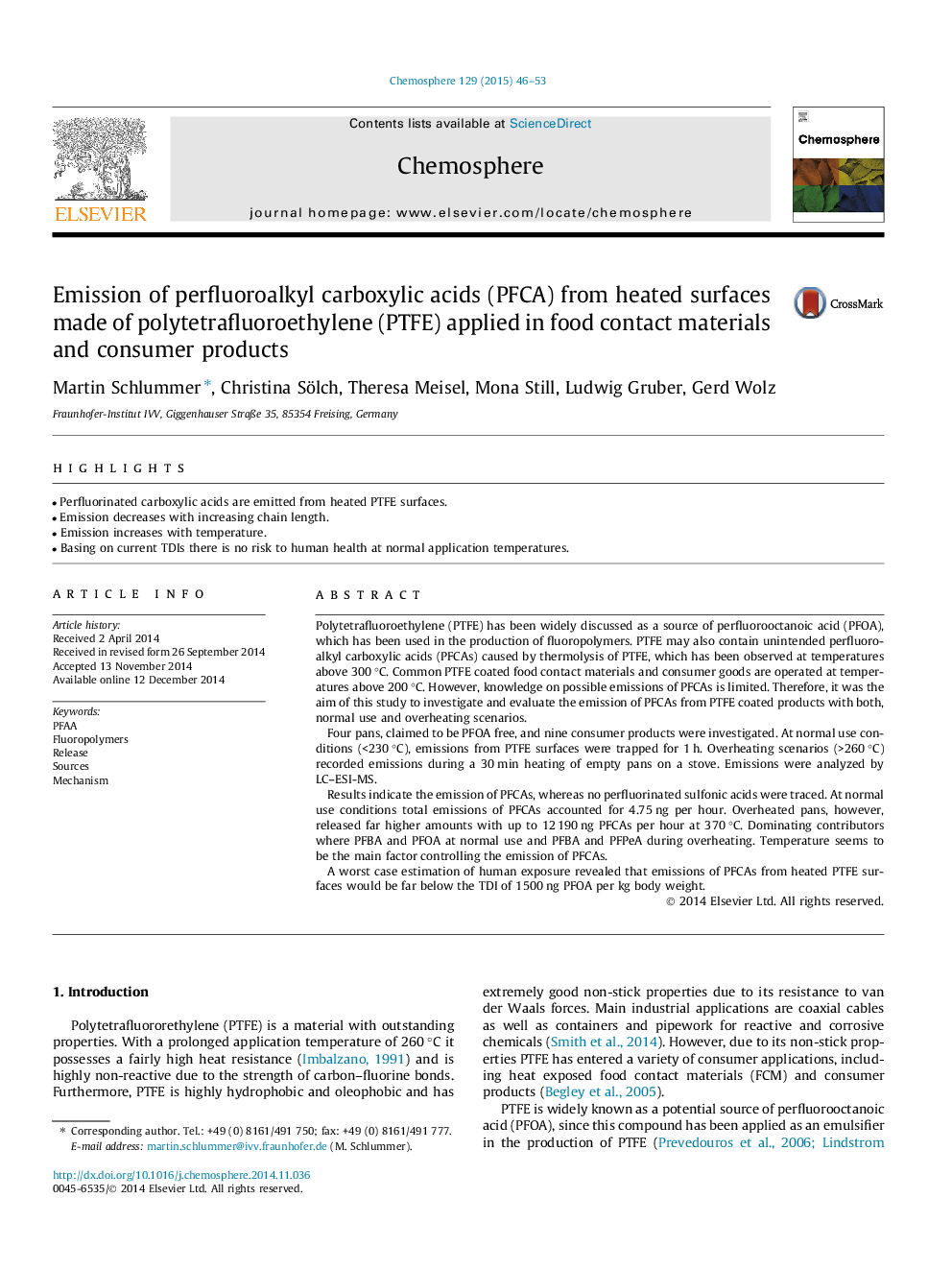| کد مقاله | کد نشریه | سال انتشار | مقاله انگلیسی | نسخه تمام متن |
|---|---|---|---|---|
| 4408434 | 1618842 | 2015 | 8 صفحه PDF | دانلود رایگان |

• Perfluorinated carboxylic acids are emitted from heated PTFE surfaces.
• Emission decreases with increasing chain length.
• Emission increases with temperature.
• Basing on current TDIs there is no risk to human health at normal application temperatures.
Polytetrafluoroethylene (PTFE) has been widely discussed as a source of perfluorooctanoic acid (PFOA), which has been used in the production of fluoropolymers. PTFE may also contain unintended perfluoroalkyl carboxylic acids (PFCAs) caused by thermolysis of PTFE, which has been observed at temperatures above 300 °C. Common PTFE coated food contact materials and consumer goods are operated at temperatures above 200 °C. However, knowledge on possible emissions of PFCAs is limited. Therefore, it was the aim of this study to investigate and evaluate the emission of PFCAs from PTFE coated products with both, normal use and overheating scenarios.Four pans, claimed to be PFOA free, and nine consumer products were investigated. At normal use conditions (<230 °C), emissions from PTFE surfaces were trapped for 1 h. Overheating scenarios (>260 °C) recorded emissions during a 30 min heating of empty pans on a stove. Emissions were analyzed by LC–ESI-MS.Results indicate the emission of PFCAs, whereas no perfluorinated sulfonic acids were traced. At normal use conditions total emissions of PFCAs accounted for 4.75 ng per hour. Overheated pans, however, released far higher amounts with up to 12 190 ng PFCAs per hour at 370 °C. Dominating contributors where PFBA and PFOA at normal use and PFBA and PFPeA during overheating. Temperature seems to be the main factor controlling the emission of PFCAs.A worst case estimation of human exposure revealed that emissions of PFCAs from heated PTFE surfaces would be far below the TDI of 1500 ng PFOA per kg body weight.
Journal: Chemosphere - Volume 129, June 2015, Pages 46–53